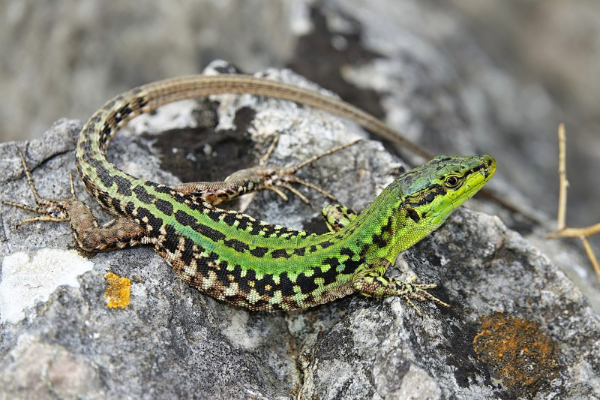séminaire vendredi 14 octobre 2022
 The evolution of an island phenotype: results from an experimental introduction
The evolution of an island phenotype: results from an experimental introduction
Anthony Herrel (CNRS, MNHN, Paris)
Vendredi 14 octobre à 13 heures, amphi Ampère
Island lizards are often characterized by differences in morphology compared to their mainland counterparts. Although previous studies have documented differences in body size, head morphology, bite force and diet in insular environments, the selective pressures driving the evolution of this insular phenotype remain poorly known. Moreover, how fast lizards evolve these insular phenotypes has never been assessed. Here we provide data for Podarcis lizards in insular ecosystems of Croatia and Greece documenting the possible drivers of the observed phenotypic differences in insular lizards. Additionally, we provide data from a replicated introduction experiment addressing the issue of how fast these phenotypes evolve. Our results show that drivers of phenotypic variation are related to island size, food availability, population density as well as founder effects. Our results of the replicated introduction experiment show that these changes occur much faster than what is typically thought and suggest an important role for phenotypic plasticity as the initial response to changes in environmental conditions when confronted with island environments.
- extrait:
- lien_externe:
- titre:
- intervenant:
- date:
- kc_data:
- a:8:{i:0;s:0:"";s:4:"mode";s:0:"";s:3:"css";s:0:"";s:9:"max_width";s:0:"";s:7:"classes";s:0:"";s:9:"thumbnail";s:0:"";s:9:"collapsed";s:0:"";s:9:"optimized";s:0:"";}
- kc_raw_content:
 The evolution of an island phenotype: results from an experimental introduction
The evolution of an island phenotype: results from an experimental introductionAnthony Herrel (CNRS, MNHN, Paris)
Vendredi 14 octobre à 13 heures, amphi Ampère
Island lizards are often characterized by differences in morphology compared to their mainland counterparts. Although previous studies have documented differences in body size, head morphology, bite force and diet in insular environments, the selective pressures driving the evolution of this insular phenotype remain poorly known. Moreover, how fast lizards evolve these insular phenotypes has never been assessed. Here we provide data for Podarcis lizards in insular ecosystems of Croatia and Greece documenting the possible drivers of the observed phenotypic differences in insular lizards. Additionally, we provide data from a replicated introduction experiment addressing the issue of how fast these phenotypes evolve. Our results show that drivers of phenotypic variation are related to island size, food availability, population density as well as founder effects. Our results of the replicated introduction experiment show that these changes occur much faster than what is typically thought and suggest an important role for phenotypic plasticity as the initial response to changes in environmental conditions when confronted with island environments.
